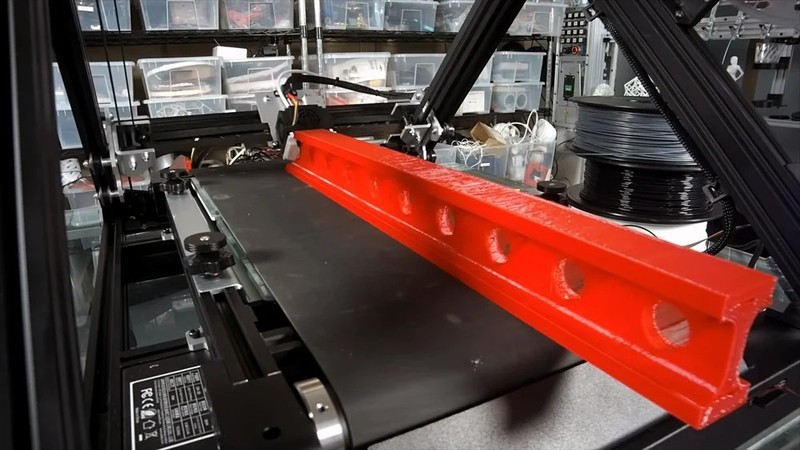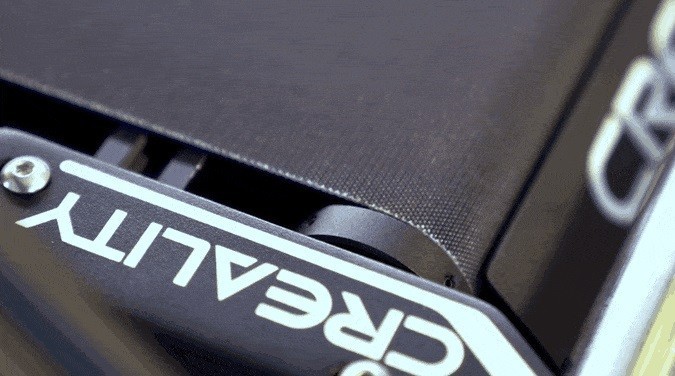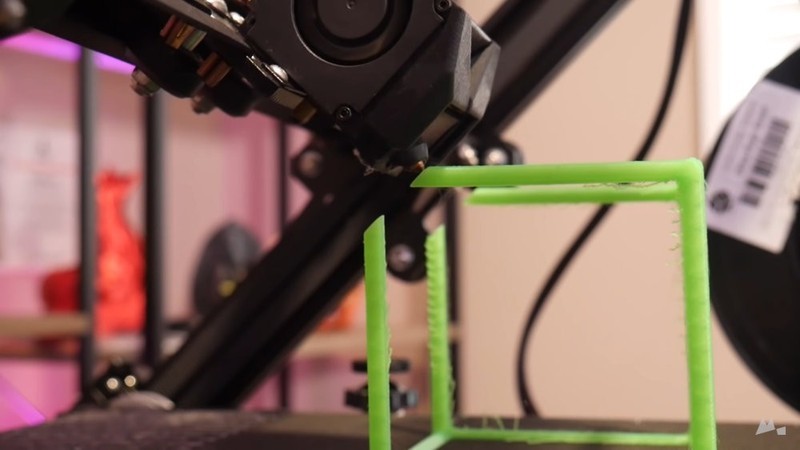
Hi everyone! In the following article, we are going to review the Creality PrintMill CR-30 — a conveyor belt 3D printer that can print objects of virtually any length. Read on to learn more about the device.

Credit: NaomiWu AKA SexyCyborg at YouTube
The printer is equipped with an “infinite Z-axis” — a conveyor belt replacing the build platform.
The location of the geometric axes in the PrintMill CR-30 differs from the traditional one. Here, Z is not the vertical to the build plate, as is usual in FDM printers — it is the length obtained with the conveyor belt. X is the axis along the width of the platform located at an angle of 45°, and Y is the axis of movement of the print head up and down.
With the width of the belt being 23 cm — of which 20 are those for printing — and the 17 cm height of the build area, we get the ultimate build volume of 170 x 200 x ∞.


The PrintMill CR-30 platform belt is made from a rough material claimed to be wear-resistant nylon, which holds prints well during printing. When they reach the end of the belt and the roller, they are easily removed. The belt itself is replaceable.
An additional roller platform is provided for printing long objects and preventing them from sticking in the print area.

The roller platform also helps transport smaller models when printed in series — they go from the belt to the platform and roll along it into a bin. Thus, it enables really uninterrupted printing limited only by the amount of filament, which allows the serial production of hundreds and thousands of parts.

Credit: Maker's Muse at YouTube
Calibration of the "platform", that is, the conveyor belt, can be done on site, but it will be quite some time before it's needed — the manufacturer states that the printers are carefully calibrated at the factory.

The CoreXY kinematic design provides fast and accurate printhead movement.
Creality promises an "ultra-quiet motherboard" with a "silent chipset". Presumably, the printer will use one of the newest Creality 4.2.x 32-bit cards. with TMC2208 stepper motor drivers.

Credit: Maker's Muse at YouTube
The PrintMill CR-30 features a hot end with two cooling fans for accurate printing and fine detail. A 0.4 mm nozzle is supplied as standard.
Creality has developed an exclusive slicing software specifically for this type of machine — CrealityBelt. Printing of one object of any length is not fundamentally different from a usual one, and serial printing of many objects is set up in a slicer program.

Credit: 3D Printing Nerd at YouTube
The texture of the belt leaves a trace on the bottom surface of the print, which may not be suitable for some models and applications. In this case, it is better to set a couple of additional layers in this area of the model, which can then be mechanically sanded or dissolved.

Credit: NaomiWu AKA SexyCyborg at YouTube
The specific design of the printer mechanics dictates that the layers of a model are applied at an angle of 45° to the surface of the belt. For some models, it is rather an advantage. Some changes in the approach to project design and the position of the part in the print area may also be required.

Aside from these nuances, the print quality of the PrintMill CR-30 is very high.
The Creality PrintMill CR-30 is not the easiest 3D printer to use, but its capabilities can be employed for full-scale serial production and printing models of a size that is unreachable to the vast majority of other desktop FFF and FDM printers.
The device can be applied in the creation of toys and souvenirs, advertising structures and interior decor, theater and cosplay props, unloaded constructional elements and prototypes of products for industry.
From an economic point of view, serial 3D printing on this device is quite justified as long as relatively small batches of products are concerned.
Update your browser to view this website correctly. Update my browser now
Write a comment